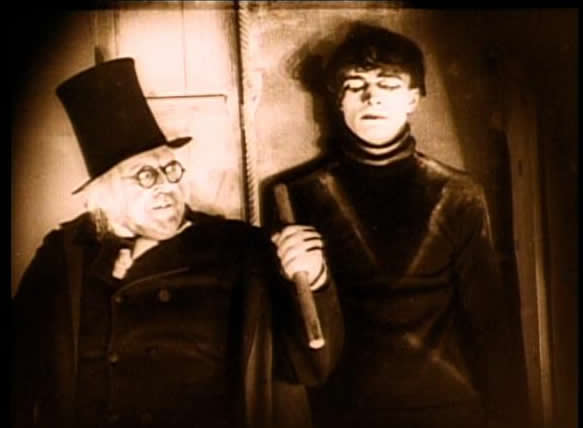

In the beginnings of the 20th Century, the impact of Dr. Sigmund Freud’s psychoanalytical theory penetrated many media. In 1919 after World War I, “Germany entered a period of unrest and confusion, a period of hysteric despair and unbridled vice full of excesses of an inflation-ridden country”, states Fritz Lang, a German Expressionist film maker of the time, noted for his famous 1924 film, ‘Metropolis’. The psychological atmosphere of the time was one of terror “social pressure could be found again in the soul of one's own as the suffering from an irrational evil”. With the discovery of the human subconscious came a lure to express the inner workings of the human psyche. In a state of unrest, the films created by the German Expressionist movement depicted, “the constant, ever-present yearning for the fantastic, the mysterious, the macabre, for the strangling terror of the dark” (Lang)
The release in 1920, of Robert Wiene’s ‘The Cabinet of Dr. Caligari’ catapulted German Expressionist film into the mainstream. The storyline of the film is relatively simple. Werner Kraus plays Dr. Caligari, a hypnotist traveling to a small German village, to show off his latest attraction: a somnambulist named Cesare, played by Conrad Veidt. When night falls, the somnambulist leave’s his casket and indulges in deadly attacks on the people of the village. Francis, played by Friedrich Feher, is the movie’s hero, exposing Dr. Caligari as a psychotic murderer. At the end of the movie the audience is told the film is the delusion of an institutionalized Francis.